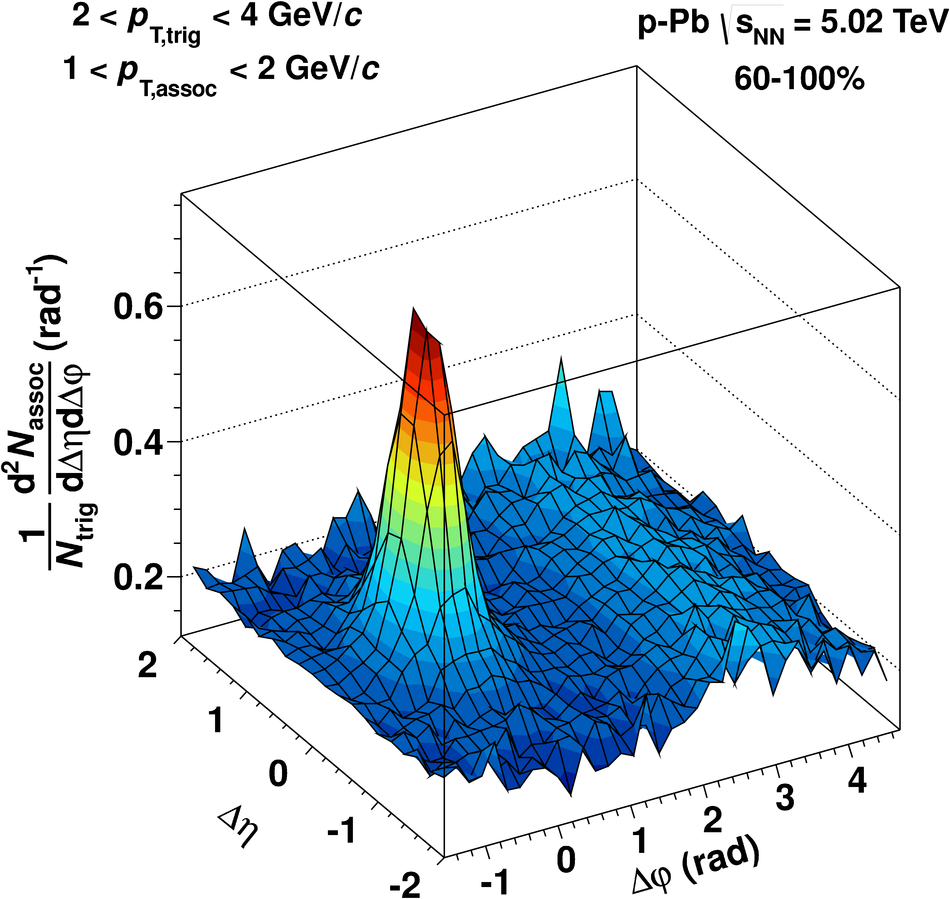Double-ridge structure in p-Pb collisions: collective flow?


class="field--item">

After the first observation of a near-side ridge in two-particle correlations in pseudorapidity in high-multiplicity pp collisions by the CMS Collaboration, this ALICE measurement revealed a clear double-ridge structure in high-multiplicity p-Pb collisions, namely a long-range correlation both in the near and in the away side. This pattern is reminiscent of the elliptic flow-induced pattern in nucleus-nucleus collisions and it could be exposed by subtracting the correlation distribution in low-multiplicity collisions from that in high-multiplicity collisions.
The first figure shows the two-particle correlation of high-multiplicity events and the second that of low-multiplicity events; the third figure shows the two-particle correlation of low-multiplicity events subtracted from that of high-multiplicity events. A clear correlated excess is found, which forms two ridges along Δη. This technique allows us to see not only the near side ridge, but also the away-side ridge, which is of similar magnitude.
The same type of double-ridge structure has been observed in collisions of heavy ions, in which a quark-gluon plasma is formed that behaves like a liquid: pressure gradients in the initial system are transformed in collective flow. However, the size of the collision system is much smaller in proton–lead collisions and a collective flow was not expected. This intriguing and unexpected result still needs to be explained theoretically. Models that produce almost identical near- and away-side ridges are based on the colour-glass condensate framework or on hydrodynamical calculations that assume collective effects to occur also in proton–lead collisions.
